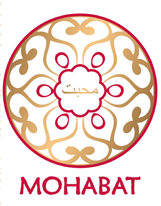The Tabriz style is named after the second largest city in Iran with the same name, which is also known as “The Home of Persian Carpets”.
Tabriz has preserved the most traditional spirit of Persian carpets with a floral pattern in the centre for a graceful and mysterious style. On the other hand, Tabriz is the most modernized, weaving together a wide range of colours and novel patterns for a fresh and exciting new look.
This carpet perfectly illustrates the Tabriz style. Classic floral pattern at the centre surrounded by European-style curled leaves framing layers of different colours. This central pattern strikes a seamless balance between the old and the new in a carefully crafted aesthetic sunflower. The background patterns consist of palm flowers, lilies and Arabian curled leaves, intertwining together present a sense of sinuous elegance. Coloured with natural dyes, the harmonious contrast between the sapphire blue and bright yellow creates a luxurious profundity.
The legendary beauty of silk carpets has been polished by time and blooms extravagantly in the modern world.
